What do professors actually do all summer? In this episode, Matt and Jadrian break down the rhythm of the academic calendar and take listeners behind the scenes of a professor’s summer months. They unpack the not-so-hidden workload that fills the break between semesters, from grading finals and writing reports to planning research and finding time to unwind. If you've ever wondered whether summer is really a vacation for academics, this one’s for you.
In this episode, we discuss:
How the end-of-semester workload shifts from teaching to administrative tasks
The behind-the-scenes responsibilities professors handle in May and June
The varying pace of summer work for faculty, deans, and teaching-focused roles
Why summer isn't just a break—it's a time for research, report writing, and prep
And a whole lot more!
Catch up on some old episodes:
You can also listen to us on Google Podcasts, TuneIn Radio, and Apple Podcasts. If one of these is your go-to podcast service, be sure to rate us and subscribe!
Watch this episode on YouTube:
Some show notes:
We’re recording this in April as the semester is slowly coming to an end. We each have just a few weeks left, but for Jadrian, the semester is even shorter. Virginia Tech was able to convince Metallica to come to campus on the last day of classes, most likely as an homage to the Enter Sandman entrance that Virginia Tech is famous for (see below). To help celebrate the end of the semester, Matt and Jadrian hopped on Zoom to talk about their summer plans. Before they get too far into their talk, Jadrian cracked open a cold Strawberry Shortcake Blonde Ale from Alewerks Brewery Company, and Matt had and I'm An Alligator by SingleCut Beersmiths.
As the semester winds down, both Matt and Jadrian reflect on how their work shifts during the final weeks. For professors with heavier teaching requirements, the end of the semester quickly shifts from delivering lectures to hurried grading and managing student emails—ranging from thank-yous to concerns about grades and summer classes. For those with more administrative responsibilities, the end of the semester includes a lot of end-of-year events and student support tasks before slowing down again in early summer.
May can still feel like a full workload, but with a different structure. June and July bring an entirely different kind of work. While email traffic remains steady, the nature of the tasks shifts to planning, writing reports, and prepping for fall. For professors who chose to teach summer classes, it can be a chance to try new things or just to earn a little bit of extra income. Matt and Jadrian have both taught summer classes in the past, but Jadrian has found that it made it hard to get a real break from the continuous work and has vowed not to do it again if he can help it.
Summer months are ideal for working on bigger projects that require quiet, uninterrupted time. A lot of professors are trying to finish up projects to get them sent out for peer review before the Fall semester begins. Some professors may use the summer to prepare for the Fall semester, but Jadrian tries not to touch his courses until August.
Perhaps the most common theme, whether it’s administrators or teachers, is figuring out how to carve out time to relax. Some take mid-May vacations, others find short breaks in July more realistic. Regardless of when you do it, it’s important to take time to recharge, whether by fully logging off for a few days or slowly easing into lighter summer routines.
This week’s pop culture references:
Jadrian shares a clip submitted by Brian Lynch to the Economics Media Library, highlighting a Saturday Night Live sketch that flips the script on traditional business news. The parody, “Check to Check Business News” (CTCBN), imagines what financial reporting would look like if it focused on everyday Americans living paycheck to paycheck.
Matt highlights the economic themes found in The Last of Us, pointing to several clips available on Critical Commons that can be used as teaching tools. He and
have recorded videos exploring how the show illustrates core economic concepts, from scarcity to incentives, within a post-apocalyptic world.

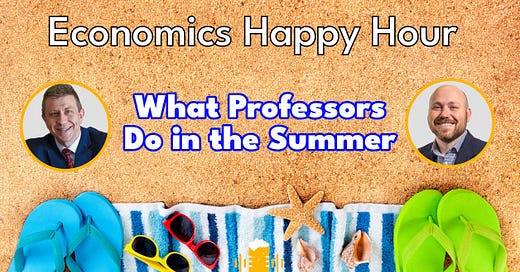
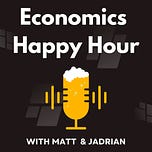








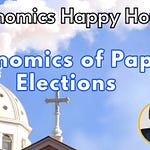

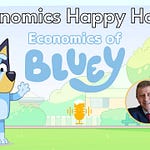


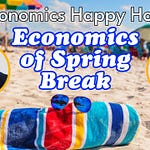
Share this post